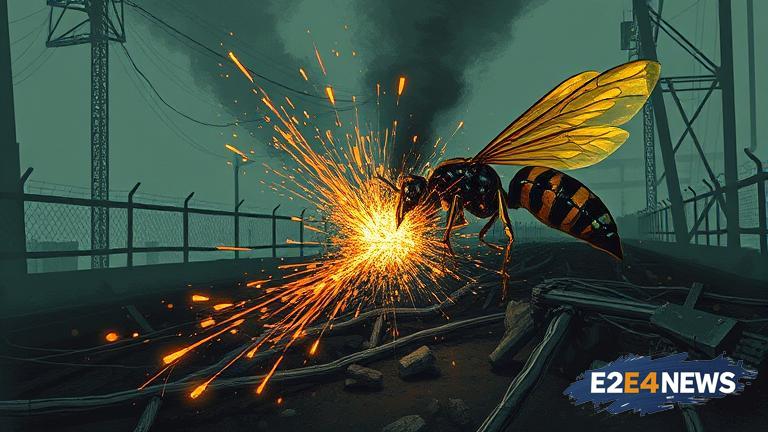A recent discovery at the Savannah River Site, a nuclear facility located in South Carolina, has raised concerns about the potential risks of radioactive contamination. The site, which is owned and operated by the US Department of Energy, is a major center for nuclear research and development. The radioactive wasp nest, which was found in a wooded area near the site’s perimeter, has been identified as a yellowjacket nest that has become contaminated with radioactive materials. The nest is believed to have been contaminated through the ingestion of radioactive insects or other small animals that have come into contact with radioactive materials at the site. The discovery of the radioactive wasp nest has prompted an investigation into the source of the contamination, with officials working to determine how the nest became radioactive and what steps can be taken to prevent similar incidents in the future. The Savannah River Site has a long history of nuclear research and development, and has been the site of numerous nuclear accidents and incidents over the years. Despite these incidents, the site has a strong safety record and is considered to be one of the safest nuclear facilities in the country. The discovery of the radioactive wasp nest is a reminder, however, of the potential risks associated with nuclear research and development, and the need for ongoing vigilance and monitoring to prevent accidents and incidents. The investigation into the radioactive wasp nest is ongoing, and officials are working to determine the full extent of the contamination and what steps can be taken to mitigate its effects. The incident has also raised concerns about the potential impact of the contamination on local wildlife and the environment, with some experts warning that the radioactive materials could have long-term effects on the ecosystem. The Savannah River Site is located in a densely wooded area, and the surrounding environment is home to a wide variety of plant and animal species. The site is also located near several major waterways, including the Savannah River, which provides drinking water for thousands of people in the region. The discovery of the radioactive wasp nest has prompted calls for increased transparency and accountability at the Savannah River Site, with some critics arguing that the incident highlights the need for more stringent safety protocols and greater oversight of nuclear facilities. The incident has also sparked concerns about the potential risks associated with nuclear energy and the need for alternative sources of energy. The US Department of Energy has announced plans to conduct a thorough investigation into the incident and to take steps to prevent similar incidents in the future. The agency has also pledged to work with local officials and residents to address concerns about the potential impact of the contamination on the environment and public health. The discovery of the radioactive wasp nest is a reminder of the importance of ongoing monitoring and vigilance at nuclear facilities, and the need for a comprehensive approach to safety and risk management. The incident has also highlighted the need for greater transparency and accountability in the nuclear industry, and the importance of prioritizing safety and environmental protection. The Savannah River Site is one of several nuclear facilities located in the southeastern United States, and the incident has sparked concerns about the potential risks associated with these facilities. The US Department of Energy has announced plans to conduct a thorough review of safety protocols at all of its nuclear facilities, and to take steps to prevent similar incidents in the future. The discovery of the radioactive wasp nest is a significant incident that highlights the need for ongoing vigilance and monitoring at nuclear facilities, and the importance of prioritizing safety and environmental protection.
